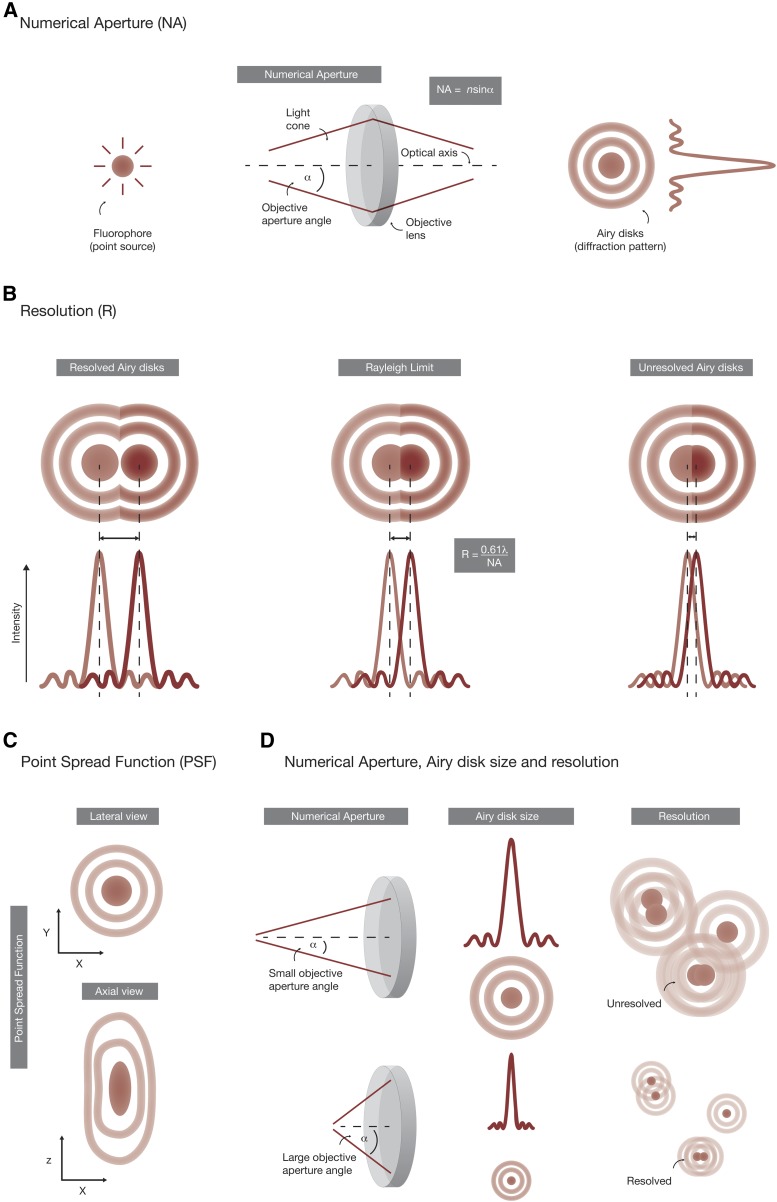Figure 3.
Numerical Aperture (NA), Airy disks, and image resolution. (A) Fluorophores are considered as point sources of light that emit photons. Due to the wave nature of light, emitted photons are diffracted at the optical components of the microscope and eventually appear as regularly spaced rings (Airy disks) at the detector unit. The number of photons that can be collected by the objective depends on the size of the objective aperture angle (α) and the refractive index of the sample immersion medium (n). Together, both values define the NA (NA = nsinα) of an objective, which is a dimensionless measure that describes its performance. The NA of objectives that are used for fluorescence microscopy typically ranges from 0.2 to 0.95 for air objectives and 0.85 to 1.4 for oil objectives. (B) The ability of a fluorescence microscope to resolve two point sources of light that are in close proximity is essentially defined by the Rayleigh criterion (R = 0.61λ/NA). It states that the maximum resolution of a fluorescence image is roughly half the emission wavelength of the fluorophore. When two fluorophores are further apart they can still be resolved, while fluorophores that are too close to each other appear as a single spot. (C) The Point Spread Function (PSF) is the three-dimensional representation of the Airy pattern and a unique fingerprint of each imaging system. In the lateral dimension, the PSF appears as regular rings, while in the axial dimension these rings appear as elongated ellipsoids. Hence, the shape of the PSF resembles that of an hourglass. (D) The NA of the optical system fundamentally defines its capability to resolve details in the image. Larger collection angles generate smaller Airy disks of individual fluorophores at the detector and consequently produce images with greater resolution.

